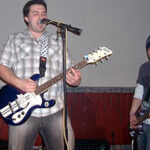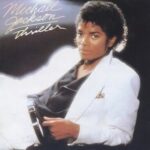When you are ready to record music or other material at home there are a lot of choices out there for hardware. The first step to choosing the right sound card is to make a list of things you know that you need from the hardware and the performance of the sound card software.
The sampling rate is a top issue. The higher the sampling rate the better sound quality will be. Most professional recordings start at a 24 bit sampling rate and then after mastering the sampling rate is converted to 16 bit. When you start with a higher sampling rate and then convert it to a lower one most of the high quality sound is retained in the final conversion. CD quality is set at a standard rate of 16 bit, 44.1 KHz. You might ask yourself if that is good enough for a recording. It is but starting with a higher rate and converting it down will produce crisper highs and deeper lows in the final conversion because of the increased headroom that a higher sampling rate can provide. All professional recording studios start with a high sampling rate and then convert it to CD quality for production and distribution. Even a low quality MP3 file will sound much better if it was converted down from a high resolution recording at a high sampling rate.
AD/DA converters (Analog to Digital and Digital to Analog) are also an important feature to consider. The quality of the converters and amount of programming that went into their construction can have a big effect on your final product. If you plan on using higher sampling rates you will want to include the best converters in your choice. Most high end sound cards will have a nice set of converters but do a little on-line research when choosing AD/DA converter options.
Inputs and outputs on your card will vary. On-board sound cards that ship with most home computers will have one or two at best. If you plan on recording a large band you will want as many inputs and outputs available. Some drummers will use up to, if not more, eight inputs to capture the subtle nuances of each drum or cymbal. The more inputs you have the better control you will have later over each sound at the time of mix-down. Outputs can be two or more depending on what your needs are. If you mix down your tracks locally (on your computer) you only need two but if you want to send each track to an external recording device you may want to consider having more.
Connections to your computer and the sound card hardware are typically one of three methods that are PCI, Firewire and USB. Each type of connection has its own advantages. An on-board sound card (PCI) may suffer from fan or CPU noise depending on your computer system. Some have filters to protect them from such noises and interference. USB and Firewire devices connect from the USP or FIrewire connection and sit next to the computer a few feet away but may suffer from latency problems. Latency is an issue that all digital sound cards must deal with unless you configure them to run in ASIO mode. Even in ASIO mode you will still have almost 1 millisecond of delay or less. For slow music this may not be an issue but for fast, surgically perfect songs that require perfect timing this may cause problems. The good thing about higher end cards and software is that the latency can be edited later in the mixing process and removed.
If you cover these basic areas when considering a sound card you will be happy with your purchase and the hardware should meet or exceed your needs. Some sound cards come with software that can convert files from .wav to MP3 or other file formats. This can be helpful if you want to sell high quality CD files or MP3 quality files for streaming or downloading. Always make sure that you record your material at the best possible quality and when you mix it down to other formats you will retain a lot of the initial quality that you had at a higher resolution.






